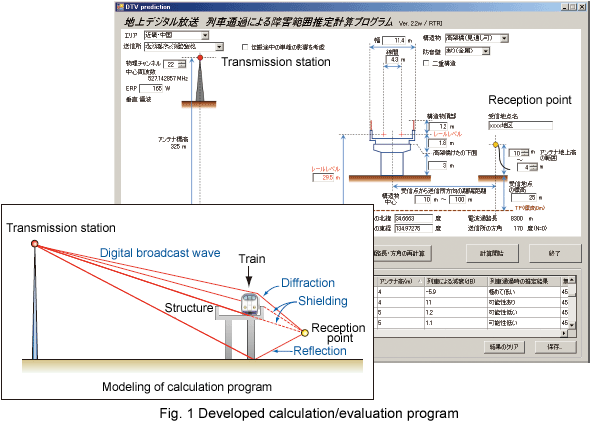Digital terrestrial broadcasting was introduced nationwide in December 2006, and analog broadcasting is scheduled to end in July 2011. Currently, actual measurement surveys must be performed to ascertain the quality of digital terrestrial broadcasting reception along railways, and evaluating the influence of passing trains in particular takes up large amounts of time and money. Accordingly, the RTRI developed a program to calculate/evaluate reception levels in the presence of railway structures and trains by considering the diffraction phenomenon caused by viaducts and trains as well as the influence of radio waves arriving through under viaducts (Fig. 1). In the program, the scale of variations in reception levels associated with the passage of trains is calculated, and the likelihood of influence (defined in one of the four categories of very low, low, present and high) is output. This is done by selecting a transmission station in the target district for calculation and arbitrarily setting locations/sizes of railway structures and locations/heights of reception points. Unless there are peculiar radio wave propagation conditions, the scale of variations in reception levels associated with the passage of trains can be calculated with relatively small errors in the order of ±6 dB. The program enables estimation of points where influences may occur, and reduction in the number of locations where actual measurements need to be carried out.
|

